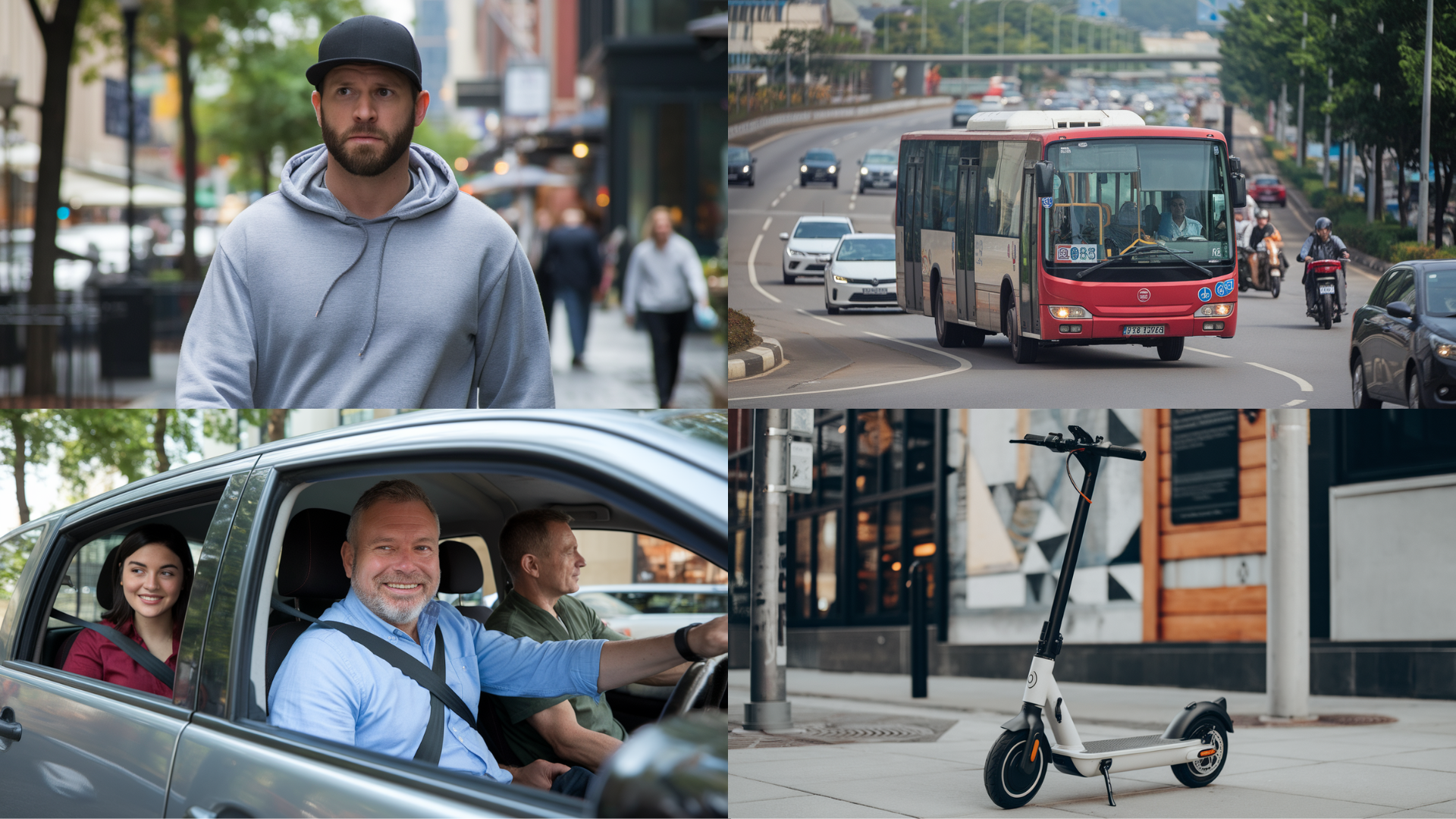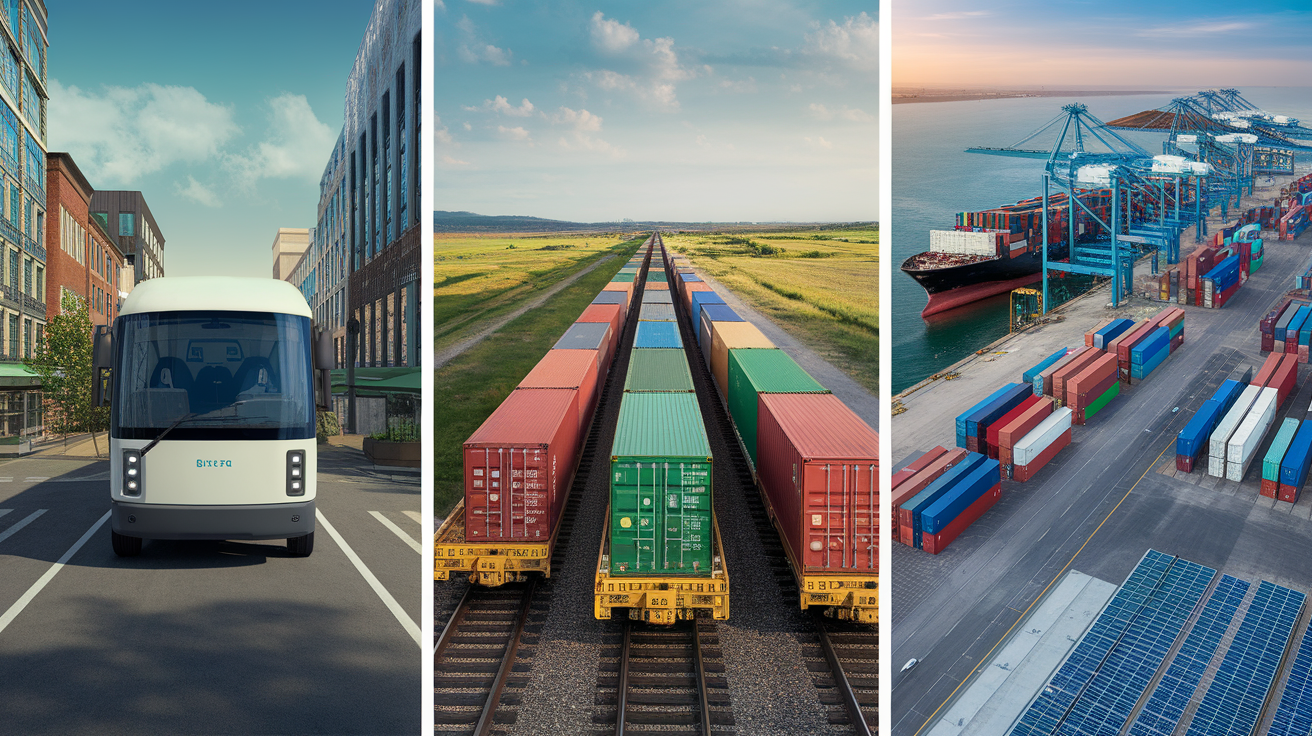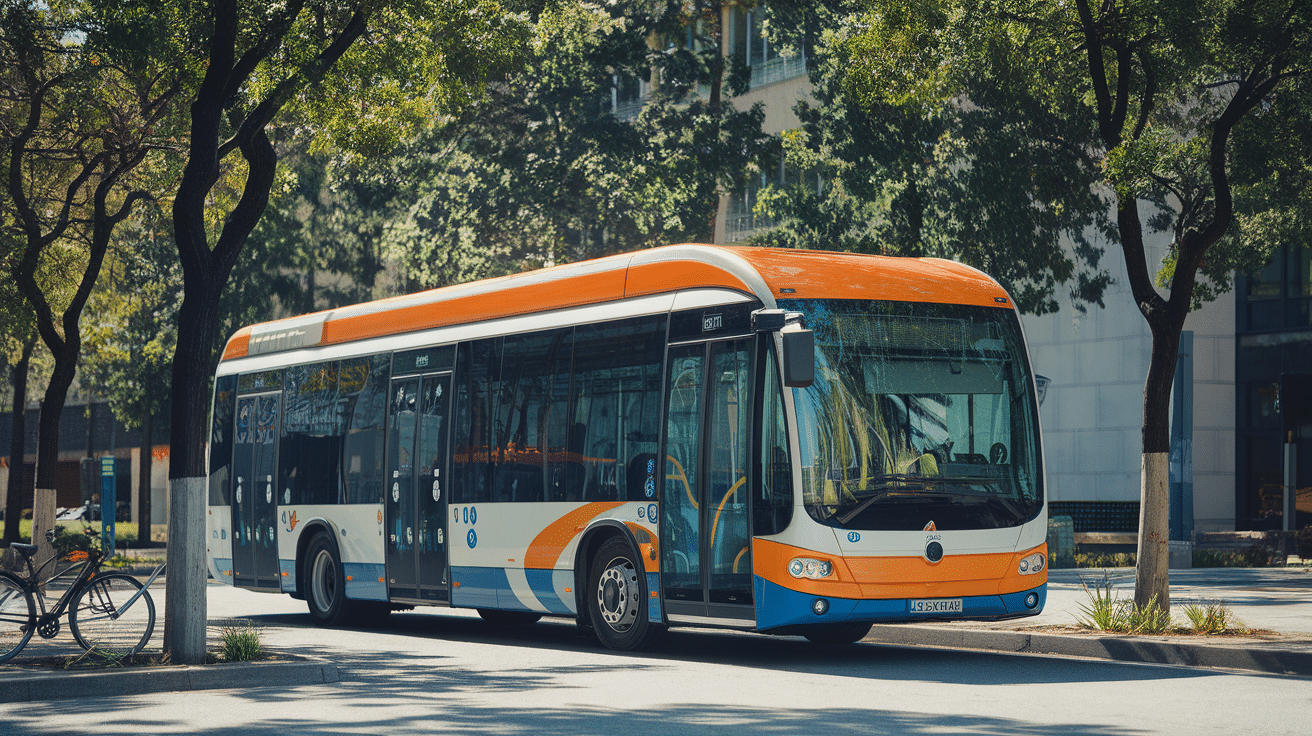When I think about eco-friendly transportation, I see it as more than just a trend – it’s a shift in how we move every day.
Cars, buses, and planes are some of the biggest sources of pollution, and I know making small changes in how we travel can create a real difference.
Green transportation isn’t only about electric cars; it’s also about walking, biking, public transit, and smarter choices that save money and energy.
I’ve noticed that as cities and businesses invest in cleaner options, it becomes easier for people like you and me to get around without harming the planet.
In this guide, I’ll walk you through the best eco-friendly transportation ideas and technologies shaping the future of travel.
What is Eco-Friendly Transportation?
Eco-friendly transportation, also called green transportation, simply means moving people and goods in ways that create less harm to the planet.
Traditional cars, trucks, and planes rely on fossil fuels like gasoline and diesel, which release greenhouse gases and cause air pollution.
In contrast, eco-friendly transportation uses cleaner methods such as electric vehicles, public transit, biking, walking, carpooling, and even renewable fuels.
These options lower emissions, improve air quality, and often save money over time. I like to think of it as choosing smarter ways to travel that balance convenience with responsibility.
By shifting to eco-friendly transportation, we’re not just cutting pollution – we’re also building healthier communities and creating a cleaner future for the next generation.
Benefits of Green Transportation
When I started learning about green transportation, what stood out most was how many benefits it brings – not just for the planet, but also for people, cities, and even businesses.
- Lower pollution: Fewer greenhouse gases and cleaner air for everyone.
- Better health: Walking, biking, and cleaner air reduce risks of respiratory and heart problems.
- Cost savings: Less money spent on fuel and car maintenance with greener options.
- Energy efficiency: Reduced dependence on oil and smarter use of renewable energy.
- Stronger communities: Walkable and bike-friendly areas create safer, more connected neighborhoods.
In the end, green transportation is more than a way to cut emissions – it’s a step toward healthier people, stronger communities, and a sustainable future we can all share.
Eco-Friendly Transportation Options for Daily Travel

There are many simple ways to travel each day that cut down on pollution and save money. These eco-friendly choices also improve health and make cities more livable.
- Walking and cycling: Zero emissions, low cost, and good for fitness.
- Public transit: Buses, trains, and subways reduce traffic and pollution.
- Carpooling and ride-sharing: Share rides to lower fuel use and road congestion.
- Electric scooters and e-bikes: Quick, flexible, and powered by clean energy.
- Telecommuting and remote work: Reduces commuting altogether, saving time and emissions.
- Car-sharing services: Access a car only when needed, cutting ownership costs and waste.
Green Transportation Technologies and Vehicles
Technology is changing how we travel, and many new options are making transportation cleaner and smarter.
From electric cars to alternative fuels, these solutions are designed to cut emissions while keeping travel convenient and reliable.
| Technology / Vehicle | Key Features | Best Use Case |
|---|---|---|
| Electric Vehicles (EVs) | Zero tailpipe emissions, rechargeable | Daily commutes, city and highway travel |
| Plug-in Hybrids (PHEVs) | Short electric range + gas backup | Short trips + occasional long drives |
| Hydrogen Fuel Cell EVs | Long range, fast refueling, clean water output | Heavy-duty trucks, buses, long trips |
| Biofuel Vehicles | Uses renewable plant- or waste-based fuel | Aviation, shipping, large fleets |
| Hybrid Vehicles | Gas engine + electric motor | Fuel-efficient alternative to gas cars |
Green Transportation for Freight and Logistics

Freight and logistics keep the world moving, but they also generate some of the highest emissions. Green transportation strategies are now gaining ground with new technologies, smarter infrastructure, and stricter standards.
By shifting to cleaner solutions, companies can reduce emissions, save money, and improve efficiency.
1. Electric Trucks and Buses
Electric trucks and buses are transforming city deliveries and regional routes. With zero tailpipe emissions and lower operating costs, they’re effective for short-haul transport in dense urban areas.
Amazon and UPS are already deploying electric vans, while cities like Los Angeles are expanding electric bus fleets. Beyond cutting carbon, these vehicles also reduce noise pollution in neighborhoods.
2. Rail and Intermodal Shipping
Rail is one of the most efficient ways to move freight long distances. A single train can carry the load of hundreds of trucks, using far less fuel per ton.
Intermodal shipping, which combines rail with trucks for the last miles, balances efficiency with flexibility. Companies like FedEx and Walmart increasingly rely on these solutions to cut emissions while reducing highway congestion.
3. Ports and Warehouses
Ports and distribution hubs are hotspots for emissions from ships, trucks, and diesel yard equipment. Many are adopting shore power so ships can plug into electricity instead of burning fuel while docked.
Electric yard tractors and solar-powered warehouses are also growing. The Port of Long Beach in California is a leading example, with a plan to become a zero-emissions hub by 2035.
Eco-Friendly Transportation in Aviation and Shipping

Aviation and shipping are two of the hardest sectors to make green because they depend on long distances and heavy fuel use. Still, new technologies and cleaner fuels are creating real opportunities.
1. Sustainable Aviation Fuel (SAF)
SAF is made from renewable sources like plant oils, waste, or even captured carbon. It can cut aviation emissions by up to 80% compared to traditional jet fuel.
Major airlines, including United and Delta, are already using SAF on select flights. While production is still limited, government incentives and industry demand are helping scale it up.
2. Green Shipping Solutions
Ships produce huge amounts of emissions, but new strategies are starting to change that. Wind-assist sails, cleaner fuels, and AI-powered route optimization all reduce fuel use.
For example, Maersk is investing in methanol-powered ships as part of its zero-carbon pledge. Shore power at ports also allows vessels to cut engines and plug into electricity while docked.
3. Electric Ferries
For shorter routes, electric ferries are a practical and growing solution. Countries like Norway lead the way, running fully electric ferries across fjords.
In the U.S., Washington State Ferries has started converting its fleet to hybrid-electric models. These vessels lower operating costs, reduce noise, and make waterways cleaner for coastal communities.
How Businesses Can Use Green Transportation
Businesses play a big role in cutting transport emissions, and adopting green practices can also lower costs and boost efficiency.
- Fleet electrification: Switch to electric or hybrid vehicles for deliveries and company cars.
- Route optimization: Use software to cut mileage, fuel costs, and emissions.
- Sustainable shipping contracts: Partner with carriers that use low-emission trucks, ships, or trains.
- Workplace commuter programs: Offer bike facilities, transit passes, or carpool incentives for employees.
- Green logistics hubs: Invest in solar-powered warehouses and electric yard equipment.
Policies Supporting Eco-Friendly Transportation
Government policies play a huge role in speeding up the shift to eco-friendly transportation.
By setting standards and offering incentives, they make it easier for individuals, cities, and businesses to adopt cleaner travel solutions.
- EV incentives and rebates: Tax credits and purchase rebates lower the cost of electric cars and charging stations.
- Clean vehicle standards: Rules that limit emissions from cars, trucks, and buses push manufacturers toward greener models.
- Public transit funding: Investments in buses, subways, and rail make mass transit more reliable and accessible.
- Low-emission zones: Some cities restrict or charge higher fees for polluting vehicles in busy urban areas.
- Infrastructure investment: Building bike lanes, walkways, and EV charging networks supports long-term adoption.
Conclusion
Eco-friendly transportation is no longer just an idea for the future – it’s something we can all take part in today.
From walking and cycling to driving electric vehicles and supporting clean freight solutions, every choice makes a difference.
Green transportation reduces pollution, saves energy, and builds healthier communities, while also cutting costs for individuals and businesses.
Governments and companies are stepping up with policies and innovations, but real change also comes from daily habits.
I believe that even small shifts in how we travel can add up to meaningful results over time.
By choosing cleaner ways to move, we’re not only protecting the planet but also creating a safer, more sustainable future for the next generation.















